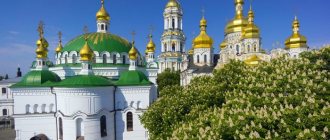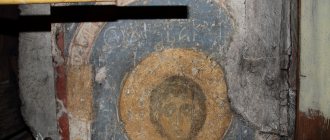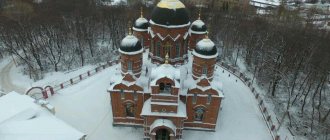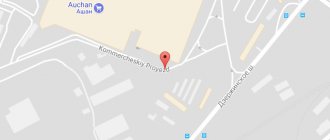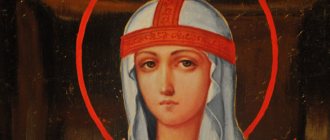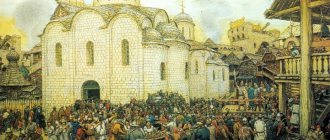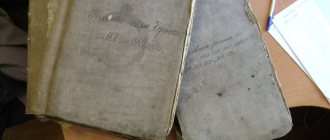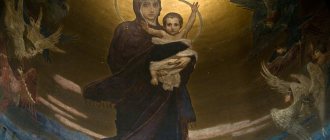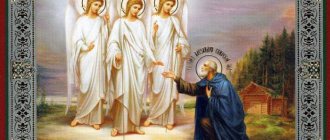Kyiv cathedrals
As is known, the first stone churches in Rus' appeared after the tenth century. Until this time, all buildings were wooden. Time, wars, and uprisings have destroyed them, so it is impossible to visit these sites today. But monuments of stone architecture, as well as brick ones, are favorite places on any excursion. There are an unimaginably large number of religious buildings in Kyiv. Which ones are the most popular?
- St. Cyril Church is a temple that was built in the 12th century. It gained great fame thanks to the paintings that decorate its walls.
- The Kiev Pechersk Lavra is represented by a complex of cathedrals and churches. All of them have a rich history, many of them are included in the UNESCO heritage list.
- St. Michael's Cathedral is one of the most famous temples that are part of the Kiev Pechersk Lavra. In the 30s of the previous century it was barbarically destroyed, but quite recently it was restored. Before it was destroyed, a number of frescoes and icons were removed from it. After restoration they returned to their place again.
- Saint Sophia Cathedral. During the times of Kievan Rus, it served as the main, most important temple in the entire state.
- St. Vladimir's Cathedral in Kyiv is one of the most visited places. People simply call it: Vladimir Cathedral. It has a rich history that dates back several centuries. In addition, many talented artists painted it.
Europe » Ukraine » St. Vladimir Cathedral
St. Vladimir's Cathedral is the main temple of the Ukrainian Orthodox Church of the Kievan Patriarchate, built in honor of Prince Vladimir the Great to celebrate the 900th anniversary of the Baptism of Kievan Rus.
Myths and facts
When a huge monument to Vladimir the Great was erected in Kyiv on the steep bank of the Dnieper in 1853, people said: “Prince Vladimir threw off the idols in order to become one of them himself.” Therefore, the patriarchate began to collect money for the future St. Vladimir Cathedral.
The development of the project was entrusted to the St. Petersburg architect Ivan Shtrom, who built the cadets' house in Kyiv. He decided to decorate the temple in the old Byzantine style, like all ancient Kyiv churches, with 13 golden domes. But the project turned out to be too expensive to implement. Despite the fact that it was possible to collect more than 100,000 rubles in donations in different regions, and the Kiev Pechersk Lavra allocated a million bricks for construction, there were not enough funds.
The architect of the Kyiv diocese, Pavel Sparro, was tasked with somehow reconciling the estimate with the realities, and he left 7 of the 13 proposed domes. Kiev Metropolitan Arseny was upset: the future temple seemed too nondescript to him.
The spiritual leadership turned to the architect Alexander Beretti for help. He offered to increase the linear scale of the structure by one and a half times for the same money, thanks to which the volume tripled. They believed his authority and in 1862, on the feast of Vladimir, the foundation stone for the future cathedral took place.
At first, construction progressed successfully. But in the fall of 1864, some arches could not withstand the weight of the upper tier and moved apart. The architect blamed everything on the contractors. Just in case, we decided to reduce the height of the domes. But in 1866, the cracks in the arches increased. Beretti desperately fought off criticism, but he was unable to save his reputation - to identify the causes of the accident, they sent... Ivan Shtrom to Kyiv.
Beretti was removed from construction. The work stopped because no one wanted to take responsibility for its continuation. But the walls were barely holding up and had to be protected from falling with metal structures. This sad red tape stopped only in 1875, when Emperor Alexander II saw the ruins of the unfinished cathedral. Additional funds were immediately found and a world-famous specialist arrived in Kyiv: a civil engineering scientist from St. Petersburg, Rudolf Bernhard, whose calculations formed the basis of the structure. The walls of the building were reinforced with special extensions - buttresses. As the project manager, Bernhard recommended his student, 28-year-old Vladimir Nikolaev, who took the position of Kyiv diocesan architect. The young architect coped well with difficult responsibilities and by 1882 the construction was completed. All that remained was to decorate the interior of the cathedral.
Art historian and archaeologist Professor Adrian Prakhov was imbued with the dream of turning the Vladimir Temple into a treasury for modern religious painting. He invited the best artists: Vasnetsov, Nesterov, Vrubel, the Svedomsky brothers, Kotarbinsky, Ukrainian masters Pimanenko and Kostenko. Despite the shortage of funds, criticism due to the excessive boldness of creativity and the long period of painting (as much as 11 years!), Prahov’s plan was realized. Thanks to the high skill of execution, extreme emotional intensity and accurate historical surroundings, the painting of the cathedral became an outstanding work of monumental art of the late 19th century.
On August 20 (September 1), 1896, the heavy doors of the temple swung open. During the solemn ceremony, people did not know where to look: at Metropolitan Ionnicius, who performed the consecration, Tsar Nicholas II, who was present, or at the amazing paintings that involuntarily attracted the eye... (based on materials from “Drawings on the History of Kiev”)
During the Soviet period, Vladimir Cathedral miraculously escaped demolition. In 1929 it was converted into a museum of religion and atheism. Then it became a repository for government archives, and later a book depository for a pedagogical institute. Opened during the occupation during World War II, the temple remained active after the liberation of Kyiv.
Since then, St. Vladimir's Cathedral has remained constantly open and regularly holds services in Ukrainian.
What to see
The building is a six-pillar temple with three apses and seven domes. The height to the cross of the main dome is 49 m. The façade is decorated with mosaics by Frolov. On the front door hangs a bronze relief of Princess Olga and Prince Vladimir on a blue background.
The main attraction of the colorful interior is the unique paintings on the walls and domes of the temple, which immediately catch the eye. The paintings of the most famous artists of that time (Vasnetsov, Nesterov, Vrubel, etc.) present grandiose compositions on biblical themes and a symbolic presentation of the history of Orthodoxy. The main nave was painted by Vasnetsov: “The Baptism of Prince Vladimir”, “The Baptism of the Kyivans”, his brushes also include portraits of Alexander Nevsky, Andrei Bogolyubsky, Princess Olga and the central composition “The Virgin and Child”.
Divine services are accompanied by beautiful singing from the cathedral choir, and opera singers are often invited to religious holidays.
In Kyiv, on the right bank of the Dnieper, you will find an ancient functioning monastery. I also recommend visiting the highest cathedral in Kharkov and the famous Crimean monasteries of Kosmo-Damianovsky and Holy Assumption.
St. Vladimir's Cathedral is open from 9.00 to 18.00. Located near the University metro station. Official website: katedral.org.ua/ (Ukrainian)
a brief description of
St. Vladimir's Cathedral in Kyiv, the photo of which is presented in this article, is one of the most important operating Kyiv churches. Its history dates back to 1852.
Interestingly, the cathedral got its name in honor of Vladimir the Baptist, Prince Krasno Solnyshko. The temple is an impeccable example of 19th century architecture. The interior of the cathedral made it famous, because famous artists worked on it.
Description
The Vladimir Cathedral, which we can see now, is a temple with six pillars and three apses. It is topped with seven domes.
If we talk about the cathedral in numbers, then its length is a little more than five tens of meters, or more precisely 55. The width reaches 30 meters. The height of the temple together with the cross is 49 meters.
The cathedral is richly decorated. Its façade was painted by the artist Frolov. The main portal and massive bronze doors are decorated with cast reliefs depicting Princess Olga and Prince Vladimir the Saint.
Temple decoration
The width of the structure is about 30 meters, and its length reaches 55 m. The maximum height is 49 m. The facade is decorated with mosaics, and on the central doors there are bronze statues of Vladimir and Princess Olga. The floor of the temple is made of marble, brought from different countries, in a mosaic style.
The interior decoration is characterized by religious power and peace. They make the shrine rich and add some special flavor to the gilded iconostasis and altar, church appliances, and icons. All this was done in the jewelry workshop of I. Khlebnikov.
The central figure of the temple is considered to be the “Virgin and Child”. You can also see other large religious frescoes here:
- "Baptism of the Kievites"
- "The Baptism of Prince Vladimir"
- "Resurrection",
- "Christmas",
- "Christ before Pilate"
- "Crucifixion" and others.
The best article for you, go to: Naval St. Nicholas Cathedral Kronstadt
Every day services are held in the temple, early and evening liturgies are performed.
The main shrines of the temple include:
- icon of the Most Holy Theotokos “Unexpected Joy”,
- relics of Saint Barbara,
- face of St. Nicholas the Wonderworker with part of his relics,
- the icon of the Most Holy Theotokos “Quick to Hear” and others.
Idea
It is known that the construction of the cathedral was timed to coincide with the anniversary of the Baptism of Kyiv. Who was the initiator? Who came up with this idea? This was Metropolitan Filaret of Kiev and Galicia. He wrote a letter to Nicholas 1, the Russian Emperor, the Polish Tsar and the Finnish Prince, in which he spoke of the need to build a temple in Kyiv. It was supposed to be dedicated to the baptist of Rus' and Kyiv - a prince named Vladimir Svyatoslavovich.
The funds that went into the construction of the cathedral were collected by the people. Funds were collected for ten years, and only in 1862 the foundation was laid. Subsequently, it turned out that the funds raised were not enough to implement the idea. St. Vladimir's Cathedral (Kyiv) turned out to be too expensive a project. For another ten years, many architects tried to remake it in such a way as to avoid unnecessary costs. The cathedral was eventually built in 1882.
Architects
Many architects took on the work on the cathedral. However, it was very difficult to come to a consensus and save the project, which is why construction took so long.
The very first architect who decided to take on the Vladimir Cathedral in Kyiv was Ivan Shtrom. His idea was to build a temple with thirteen domes. He was supposed to resemble Sofia in appearance. Since there was not enough money to turn his idea into reality, an architect named Pavel Sparro came to the rescue. He proposed reducing the number of domes by half. However, he did not take into account that in this case the temple would not have been as large as planned. Paul's idea was not considered.
Another architect, Alexander Beretti, decided to complete the construction of St. Vladimir's Cathedral (Kyiv). He reduced the number of domes so that there were only seven. On the contrary, the size of the temple was increased by one and a half times. However, towards the end of construction, the walls began to crack, because their weight was very large.
Over the next decade, many architects debated how to save the temple. As a result, they supported the project of Rudolf Bernhard. His idea was brought to life by his student, Vladimir Nikolaev. He completed the construction of the temple in 1882.
Interior
In the original version, the Vladimir Cathedral in Kyiv was supposed to resemble those churches that were built during the reign of Yaroslav the Wise and Vladimir the Holy.
The cathedral was painted by masters of their craft, for example Vasnetsov and Vrubel. They created both compositions and individual interior details. The iconostasis of the temple is made of Carrara marble of a smoky gray color. Marbles of various shades were imported from Spain, Russia, Belgium, France, and Italy. The floor of the cathedral, which is a mosaic, is also made of this material.
The silver utensils, ordered specifically for the Vladimir Cathedral, were made by the famous jewelry company Khlebnikov.
Interior decoration and painting
Famous artists were involved in painting the main temple of Kyiv:
- V. Vasnetsov;
- M. Vrubel;
- M. Nesterov;
- S. Kostenko and others.
Marble was used to make the base of the iconostasis; it was also used, only in a multi-colored version, for the iconostasis finishing and floor mosaics.
Marble iconostasis of Vladimir Cathedral
Marble blocks were brought from European countries, Venetian craftsmen were involved in laying out the mosaics, and the supply of silver utensils was carried out by the Khlebnikov jewelry company, which works in different styles.
Murals
Who painted the Vladimir Cathedral in Kyiv? The group of artists who worked on decorating the temple was brought together by Adrian Prakhov. He once worked in Kyiv and was inspired by the idea of building the Vladimir Cathedral. The object was considered a monument to Russian Orthodoxy. At that time, Adrian was engaged in the restoration of the frescoes that decorated the St. Cyril Church. He immediately formed his plan, to bring it into reality he needed help. Adrian Prakhov himself worked on several details of the temple's interior. For example, the bronze entrance doors were created by him.
Thus, the artist Viktor Mikhailovich Vasnetsov did the most important work on the painting of the main nave. He owns such compositions as “The Baptism of the Kievites” and “The Baptism of Prince Vladimir”. Both of them are very large-scale. In addition, Vasnetsov painted portraits of several kings of Rus'. His hand created such masterpieces as “The Virgin and Child” and “The Queen of Heaven”. It is interesting that V.M. Vasnetsov signed a contract, according to which he had to complete his work within two years. However, it took a decade and one year. The artist was not in good health. It was constantly cold in the cathedral, and he often fell from the scaffolding. All this slowed down the pace of work, but did not stop the master. He created 15 compositions, as well as 30 individual figures.
There is even a legend that explains the appearance of several compositions. According to it, one day V.M. Vasnetsov and another artist, Prakhov, entered the cathedral. They saw on the wall the outlines of the image of the Mother of God and the baby. Viktor Mikhailovich immediately grabbed his brushes and outlined the image with paints. Thanks to this, his main brainchild appeared, namely, the image of the Mother of God with the Child, as well as a number of other famous compositions.
Another artist, Vrubel, painted the right nave. He worked together with such masters as V. A. Kotarbinsky, P. A. Svedomsky and M. V. Nesterov. The artist Frolov created mosaics that decorate the facade of the building.
Cathedral of St. Vladimir in Kyiv
The paintings by M. Nesterov in the Vladimir Cathedral are light, elegant, with gentle tones and colors that caress the eye, as if they speak of a better life in another, ideal world. But it is not with just one combination of colors and delicate tones that the artist strives to influence religious feelings. To give even more ideological and high-flying images of the faces of St. scriptures, he abundantly strews all his paintings with flowers of the same delicate colors, as symbols of spiritual beauty. This is already a tribute to the latest symbolism, imparting a significant share of convention to the works of Mr. Nesterov. As successful as Mr. Nesterov’s use of symbolic colors in the overall coloring of his paintings is, his predilection for symbolic colors is sometimes inappropriate, in the sense of pretentious showiness, and even less appropriate is the use of such crude symbolic decorations as light-bright circles, the figures of the Savior coming from all sides in the image of the Resurrection of Christ, or the connection of the bright tail of the star of Bethlehem with the halo of the Mother of God in the image of the Nativity of Christ. However, the artist’s passion for the effects of symbolism does not drown his handsome talent. It breaks through because of symbolic conventions and, first of all, declares itself in the artist’s ability to give the depicted faces, with a clear imprint of asceticism on them, an expression of high lyricism, in a gentle combination with a touching elegiac mood, involuntarily captivating the viewer and calling him to religious reflections. When you look at the “Nativity” of Mr. Hesterov, placed on the altar wall of the southern chapel in the choir, you forget about the symbolic flowers flaunting here in the cave, and about the tail of the star of Bethlehem, you do not notice the Bethlehem shepherds standing at the cradle of the newborn Christ, although their faces are The figures are painted in a characteristic and interesting way. All attention is focused on the face of the Most Holy Theotokos, full of purity and immaculateness, full of maternal happiness, kindness and unearthly humility. And I don’t want to take my eyes off this wonderful face.
The same thing, although to a much lesser extent, can be experienced in the altar of the northern aisle in the choir of the Vladimir Cathedral, when studying another large painting by Mr. Nesterov - “The Resurrection”. Christ, dressed in white robes, stands here, illuminated by brightly light circles, with a cross in his right hand. The path of Christ is strewn with flowers, flowers can be seen ahead of Him. On the calm face of Christ there is an imprint of majestic solemnity. On the left side of the Savior, somewhat further away, stands an angel - the messenger of the Holy Resurrection of Christ. In addition to these two images, Mr. Nesterov also painted “Baptism,” inserted into a frame and placed in the cathedral baptismal chamber, as well as icons for iconostases in the chapels of St. Olga and St. Boris and Gleb. For the iconostasis of the southern chapel below, icons of Philaret the Merciful, Nicholas of Myra, Barbara the Great Martyr and Arseny the Great are painted; for the iconostasis of the northern aisle - Constantine, Helen, Cyril and Methodius; for the upper southern iconostasis - the Savior, the Mother of God, St. Olga, Metropolitan Michael; for the upper north - the Savior, the Mother of God, Boris and Gleb. All these icons are decorated with flowers.
P. A. Svedomsky and V. A. Kotarbinsky do not paint symbolic colors and are not keen on symbolism. These are realist artists. Both of them, before being invited to work in the Vladimir Cathedral, lived abroad for a long time, mainly in Rome, where they received an artistic education, Mr. Svedomsky (born in Perm province, in 1849) - first at the Dusseldorf Academy, then with Gebgart and the famous Munkacci, Kotarbinsky (born in Petrokovskaya province, in 1851) - at the Roman Academy of St. Luke, under the direction of Subnet. Neither Mr. Svedomsky nor Mr. Kotarbinsky had been involved in church painting before, without feeling an attraction to it. Their paintings, now located here, are rightly recognized as paintings by major masters, but less so than the paintings of Messrs. Vasnetsova and Nesterova speak to religious feelings.
The works of Messrs. Svedomsky and Kotarbinsky are decorated with the side chapels of the cathedral below and in the choirs. Four large paintings were painted by them in collaboration, representing such a rare example in the history of painting - “The Crucifixion”, “The Judgment of Pilate”, “Entering Jerusalem” and “The Last Supper”. In the first and second paintings, Mr. Svedomsky owns the composition, sketches and a smaller part of the painting, the rest was done by Mr. Kotarbinsky; in the third, Mr. Svedomsky owns the composition, sketch and part of the painting; in the fourth - composition.
The “crucifix” is placed on the western wall of the northern naos. The painting depicts the moment of death of the crucified Christ. Dark clouds hang over the Head, only in the distance, low above the ground, one can see the reflection of the fading evening dawn, and on this bright piece of the sky the silhouettes of dilapidated crosses are outlined. To the right of the Savior’s cross there is a cross with a dead robber, and to the left you can see part of the cross of another robber. A group of people close to him gathered at the cross of the Savior. The Most Holy Virgin, with inconsolable sobs, stretches out her hands to her deceased Son, St. John supports her. Some of the witnesses to the death of the God-Man sank to the ground in despair and sorrow. To the right of this group stands a massive figure of a warrior with a thoughtful but impassive face, with a spear lowered in his hand; on the opposite side there is a very characteristic figure of a red-haired Jew, with an embittered face, wrapped in horror in a cloak and hastily leaving the place of execution of the innocent Sufferer. Another of the named paintings, “The Judgment of Pilate,” is painted above the northern entrance. Pilate sits on a curule chair placed in the middle of a marble dais, surrounded by a marble barrier. Behind Pilate are two lictors holding in their hands symbolic bundles of rods with axes embedded in them. Below Pilate, on a bench, the artists placed a scribe, marking the progress of the trial on a scroll. To the right of Pilate stands the Savior with his hands tied on his back. On His pale face there is a clear imprint of the physical suffering he endured. Below is an agitated crowd of people demanding execution. Christ. Some of the crowd try to make their way to the judge's stand, but the Roman soldiers standing on both sides of it, looking at the crowd with a look of contempt, stop them.
In the southern naos, in the appropriate place, is “The Entry of the Lord into Jerusalem.” Here is a picture of a Jerusalem street paved with stone slabs. On both sides of it are tall stone houses. In the foreground of the picture is Christ riding on a donkey. A crowd of jubilant people surrounds Him on all sides. Some of the crowd are holding palm branches in their hands, others are covering the path of the Savior with clothes, two women are kneeling, one of them is kissing the ground. Two doves soar over the crowd. Christ looks thoughtfully at this jubilant crowd, which in a few days, with the same insistence with which it now expresses greetings, will demand His execution. His disciples calmly follow Christ.
The fourth picture, painted by Messrs. Svedomsky and Kotarbinsky in collaboration, “The Last Supper”, is located on the altar wall of the same southern naos, above the iconostasis. The picture conveys the moment when the Savior had already said to Judas: “What are you doing, do it quickly!” Judas stood up and left. Embarrassment, shame and anger fight on his face. The rest of the apostles are perplexed
They whisper to each other, forming lively groups, and Christ calmly looks after the retreating traitor.
At the corresponding place in the northern aisle, Mr. Svedomsky painted the painting “Prayer for the Chalice.” It depicts the Savior praying to the Father in the deserted Garden of Gethsemane in a kneeling position. The face of Christ, exhausted by mental suffering, is half-lowered. Around the Savior are stones, several trees with their tops raised high, and stems of thorny plants. The walls of Jerusalem can be seen from the garden. All this is illuminated by the rising moon.
On the western wall of the northern aisle there is another painting by Mr. Svedomsky - “The Raising of Lazarus”. It is written on the text: “Christ cried with a loud voice: Lazarus, come out! And the dead man came out, entwined on his hands and feet with burial cloths, and his face was tied with a scarf.” The picture shows the inside of a grotto, into which stone steps lead. Christ stands in the grotto with his right hand raised. His face is calm. In front of him is a gaping hole at the bottom of the grotto, from which a dead man rises, all wrapped in linen. One of Lazarus’ sisters, kneeling next to Christ, with her arms naked, raised and slightly thrown back, fixed her joyful and perplexed gaze on her brother emerging from the grave. The other fell prostrate at the feet of Christ. Behind the Savior are two male figures. Very characteristic is the figure of an old man with a face on which shines unshakable faith in the Divine power of the Wonderworker. Consciousness of this power, reverence and involuntary fear leave their imprints on this face. Above, on the steps of the grotto, stand a man and a woman, pressed against the entrance wall in horror. The lamp standing at the bottom of the cave, behind Lazarus, illuminates the figure of a Jew, also in horror, pressed against the corner of the cave and convulsively clutching his chest with his hands. The reflections of the same lamp give beautiful reflections on the clothes of Christ and on the figures of Lazarus’s sisters.
G. Svedomsky, in addition to these paintings, also painted the days of the creation of the world, “The Second Day,” “The Third Day,” and “St. The spirit hovering over the water”, placed on the ceilings of the southern aisle, and “You will ascend”, written on the ceiling of the northern aisle in the choir. “The fourth day” and “the fifth day” of the creation of the world and “The Lord, who rested from his works,” located on the ceilings of the northern aisle below, belong to Mr. Kotarbinsky; he also owns the “Transfiguration”, placed on the ceiling of the southern aisle in the choir. Partly by the city of Svedomsky, partly by the city of Kotarbinsky, images of saints were painted, placed on the pillars of the side aisles below and on the choirs - in the northern aisle below: St. Nicholas the Svyatosha, Rev. Abraham of Smolensk written by Mr. Kotarbinsky; in the south: book. Euphrosyne of Suzdal, book. Davmont of Pskov, book. Fevronia of Murom, book. Peter Muromsky - written by Mr. Svedomsky. In the northern upper aisle, images of Rev. are placed on pillars. Mikhail of Novgorod, Rev. Theodore of Ostrog, Niphon, Bishop of Novgorod, Prince. Theodore the Black, the Wonderworker of Smolensk, Varlaam and Nikita the Stylite; in the south-upper aisle - St. Gury Archbishop of Kazan, St. Innocent of Irbitsky, Mitrofan of Voronezh, Joseph of Polotsk, St. Paphnutius, Philip Metropolitan of Moscow. Images of St. Guria, Innocent, Joseph and Mitrofan were written by Mr. Svedomsky, the rest by Mr. Kotarbinsky.
Except for Messrs. Vasnetsov, Nesterov, Svedomsky and Kotarbinsky, Messrs. took part in the decoration of the cathedral. Pimonenko and Mamontov, but they own very little. G. Pimonenko painted icons of Queen Alexandra and Nicholas of Myra for the icon cases, Mr. Mamontov made ornaments in the domes of the northern naos.
All parts of the cathedral walls not occupied by paintings, all ceilings, pilasters and cornices are decorated with various ornaments in the Byzantine style. Flowers, leaves, even whole plants, alternating and intricately intertwining with each other and with various geometric shapes, cover the walls of the cathedral. The motifs of all these ornaments are taken from the wall decorations of the Cathedral of St. Mark in Venice, Ravenna, Roman and other ancient Christian churches of Western Europe, as well as from the wall decorations of some ancient Russian churches. Borrowed patterns of ornamentation were directly processed, they were given a new grouping, with a wide variety of harmonic combinations. The ornaments were painted partly according to the designs of prof. A. V. Prakhov, partly according to his immediate instructions and under his leadership prof. M. V. Vrubel, artist A. S. Mamontov and E. I. Davidenko, currently a student at the Academy of Arts.
Gold glitters everywhere among the ornaments. There is even too much of it in the cathedral, but gold is always gold.
V. Marble and bronze works. Sacristy. The cost of building the cathedral. General impression.
A special feature of the Vladimir Cathedral is the absence of a traditional high iconostasis. As in ancient Byzantine churches, built before the fall of the Byzantine Empire, as in ancient Russian churches of the pre-Mongol period, in the Vladimir Cathedral the altar barrier is only 5 arshins. Another feature of the iconostasis of the main altar in the Vladimir Cathedral is that it has only the Royal Gates, and does not have the southern and northern ones. The southern and northern doors of the main iconostasis are replaced by the Royal Doors of the side iconostases, which in turn also have neither northern nor southern doors. There are no altars in the lower side aisles of the cathedral. In the altar of the northern aisle there is an altar, which has the meaning of the cave in which Christ was born, and Golgotha, the place of the suffering and death of the Savior, since during the proskomedia performed on the altar, both of these events are remembered; in the altar of the southern aisle there is a deacon. In modern churches, the altar is placed inside the altar, not far from the throne. In ancient churches, the altar was placed in a special compartment, built into the altar on the left side. People brought everything they needed for worship to this department. On the opposite side of the altar, also in a special annex, there was a deaconnik, i.e., a section of the altar in which sacred vessels, liturgical books, vestments were kept, and in which deacons were allowed to sit, who were forbidden to sit on the co-altar intended for bishops and priests. This is how everything was done in the Vladimir Cathedral.
All five iconostases of the Vladimir Cathedral are marble. A series of columns of light gray marble with the same bases form the main part of the altar screen of the main altar; the capitals and arches connecting the columns are white, with beautiful carved decorations. A beautiful mosaic inlay runs along the arches as a continuous ribbon. Behind the columns is a low partition made of dark green and dark red marble. Above it are local icons attached to a solid bronze wall. On top of the iconostasis arch there is a bronze kokoshnik, composed of crosses and leaves, and above the Royal Doors rises a cross, decorated with large artificial stones of purple color, beautifully tinted with marble and bronze. The iconostases of the side chapels were also made. The iconostases on the choirs consist of a black marble base with golden veins, double columns of gray marble, connected by a Gordian knot, with white carved capitals. Above the columns are beautifully carved massive arches made of white marble with inlay in the form of a wide belt of reddish marble. Iconostases
The upper aisles, in contrast to the main iconostasis, have both northern and southern doors. The lower part of the wall of the main altar is faced with slabs of dark green marble with a border of red marble surrounding them. Between the slabs in the altar semicircle are twelve flat columns of golden marble. Here, a marble altar with three steps was built from white marble, that is, a seat for the clergy, going around the altar semicircle. In the center of the co-throne, the episcopal seat, shaped like a throne, rises two more steps.
All the walls of the cathedral have panels made of dark colored marbles. All entrances also have marble cladding. The entrance to the choir is lined with white marble in the form of three arches resting on marble pillars with capitals and decorated with fine carvings. The main arch rises above the entrance to the choir, the side arches above bronze plaques with enameled inscriptions about the time of construction of the cathedral. The entrance to the baptistery, located opposite the entrance to the choir, is lined with gray marble with white veins, on both sides of it there are frames of the same marble, into which black marble boards are inserted with a list of persons who participated in the construction of the cathedral, carved in gilded letters. The diversity in the cladding of these two entrances introduces some disharmony into the strict symmetry of the interior of the cathedral. In the baptismal room there is a massive marble canopy, intended for the altar ciborium, according to the interpretation of the Patriarch of Constantinople Herman, which has the meaning of the Holy Sepulcher and, thus, indicating the death of the Savior. The ciborium was moved to the baptismal area from the main altar due to the limited size of the altar. The ciborium consists of four monolithic labradorite columns, each weighing up to 800 pounds; the columns are placed on four huge granite blocks placed in the ground. The columns were carved in Kamenny Brod (Kyiv province) and polished there. Bronze bases span the lower parts of the white marble columns. Four carved arches of white marble, decorated with mosaic inlay, link the tops of Labrador columns. From below, the ciborium appears in the form of a white marble dome resting on four pillars. To judge the massiveness of the ciborium, it is enough to say that moving it from the altar to the baptismal cost 1,900 rubles.
A marble hanging staircase, designed by V.N. Nikolaev, leads to the choir. This staircase has neither massive stone arches nor supporting pillars. The ends of the marble boards that make up the steps are embedded in the wall, and the boards themselves are pressed against each other so tightly with their edges that they not only support each other, but can withstand great weight. The choirs from the central part of the temple are surrounded by a fence of white marble in the form of slabs with columns, decorated with beautiful carvings. Only against the main altar in the choir fence there are several marble columns instead of slabs. In addition, the cathedral still has six marble choirs, two below and four in the choirs. The floor below is also marble, and in the choirs there is parquet.
Valuable marble was used for marble work. The iconostases are made of Carrara marble, the panels are made of Belgian marble, and other objects are made of French and Pyrenees marble. Marble products were made partly by foreign craftsmen, partly by Russian ones. For example, the iconostasis arches were made in Italy, and the columns of the upper iconostases were made there; the columns of the lower iconostases along with the capitals were made in Kyiv, the fence for the choir - in Odessa. All marble work was carried out, commissioned by the committee, by the partnership of Tuzini and Rossi and cost up to 100,000 rubles.
The main altar in the Vladimir Cathedral is made of marble, and the vestments on it were made from forged silver by the Khlebnikov factory with funds donated by N. A. Tereshchenko and his wife. The vestment costs 11,000 rubles. On the western side of the throne vestment there is a relief image of the Last Supper. The southern side is divided into three parts by two arches. In its center is a relief image of the baptism of Vladimir, which is a close copy of the painting by V. M. Vasnetsov, located on the southern wall at the entrance to the cathedral. On the sides there are images of two archangels in gold relief. The northern side of the vestment is also divided into three parts. In its center is the Baptism of Rus' based on the painting by V. M. Vasnetsov. In the center of the eastern side of the vestment there are relief images of the patrons of the Most August Persons: Alexander Nevsky and Mary Magdalene, Nicholas of Myra and Queen Alexandra, on the right - St. Ioannikius the Great, Alexis Metropolitan and Martyr Sophia, on the left - images of the patrons of the donors - St. Pelagia and St. Nicholas the Svyatosha. The vestment is covered with gilding and has enamel decorations, which gives the fine chased work a special grace.
The altar is made of bronze, with relief decorations and enamel decorations. Here is the same wonderful work done by the Postnikov factory with great taste. On all sides of the altar the same pattern is repeated. In the center there is a cross - the preparation of the throne. On the cross there is a throne, on the throne lies the Gospel, above the Gospel there is a cross with a crown of thorns, a spear and a sponge, and in the radiance is the Holy Spirit. On the sides are two worshiping archangels. Above the main cross is inscribed: “We worship Your Cross, Master.” The archangels are located only on the front side; on the other sides, their place is occupied by enameled ornaments. The vestments of the throne and the altar were made according to the drawings of Prof. A. V. Prakhova. According to his drawings, four beautiful bronze icon cases in the Byzantine style, 15 bronze chandeliers in the ancient Russian style, 34 different-sized bronze candlesticks of the original ancient Russian design, 5 bronze lecterns, 19 iconostasis lamps were made at the Postnikov factory. All this is done perfectly, covered with gold and enamels. Chandeliers are hung in two tiers near the central part of the temple. 4 of them weigh 80 pounds each and hold 116 candles. 8 - 26 poods each and hold 80 candles, the main thing weighs 50 poods, holds 90 candles. The chandelier in the Byzantine style, hung above the choir opposite the main altar, is especially beautiful. It was made for the All-Russian Exhibition of 1883, and then purchased from Mr. Postnikov by the famous lawyer F.N. Plevako and donated by him to the Kyiv Cathedral. Factory of Mr. Postnikov, according to the drawings of prof. A. V. Prahova, also made of gilded bronze, the Royal Gates in all iconostases, the kokoshniks above the iconostasis, a very beautiful bronze gilded and decorated with enamel letters for the solea, stretching in front of the iconostasis in the lower part of the temple. For all this work, as well as for external doors, the Postnikov factory received up to 120,000 rubles, including 14,800 rubles for western external doors, 43,000 rubles for chandeliers and candlesticks.
Vestments for clergy, liturgical books and sacred vessels were purchased for the Vladimir Cathedral with funds allocated by the Holy Synod. In the sacristy of the cathedral there are a total of 87 vestments for clergy, including one bishop's vestment, and the corresponding materials and colors of airs, shrouds, clothes for lecterns and tables. The vestments are partly made of gold, silver and red brocade, partly of golden moire, velvet and other expensive materials of different colors and patterns. Church clothes were made in Moscow, their total cost is about 10,000 rubles.
57 of all sacred vessels for the cathedral were purchased, in addition, four complete silver vessels for church utensils. Of the 57 vessels, 31 are silver, with gilding, and some with enamel decorations, 26 are bronze, including several gilded. 7 gospels were purchased for the cathedral in silver gilded boards. The total weight of the silver utensils, including the silver plaques on the Gospels, is about 3 pounds. The total cost of all these items is about 8,800 rubles, about 1,400 rubles were paid for bronze items. About 21,000 rubles were spent on the purchase of all vestments, liturgical books and sacred vessels. Among the vessels, the following are especially valuable: a silver gilded dish with enamel decorations for the all-night vigil, worth 500 rubles, wedding silver gilded crowns, with images on mother-of-pearl, worth 450 rubles, three tabernacles worth 400 rubles. each, a complete device of St. vessels worth 900 rubles, a gilded silver altar cross, with enamel decorations, with a Crucifix written on enamel, weighing about three pounds and costing 800 rubles, another similar cross with a Crucifix written on mother-of-pearl, worth 250 rubles. Of the seven Gospels, the most valuable is the Gospel, 12 inches in size, with silver gilded boards of chased work, with enamel decorations, with images painted on mother-of-pearl. It costs 1000 rubles. Another Gospel for 400 rubles. has silver gilt boards weighing 71/2 lbs. The cheapest Gospel is 100 rubles. Among the bronze items, special attention is paid to the altar cross worth 400 rubles. and the Epiphany gilded cup at 850 rubles.
The daughter of Professor A.V. Prakhov, E.A. Prahova, based on a drawing by V.M. Vasnetsov, embroidered the Shroud for the cathedral with silks. The drawing made by V.M. Vasnetsov is very beautiful, in a characteristic Byzantine style. In addition to the figure of Christ resting peacefully on his deathbed, the Shroud depicts the figures of the Mother of God, Mary Magdalene, Mary of Cleopas, Joseph of Arimathea, Nicodemus and the evangelists. Above this entire group is the star of Bethlehem, the darkened sun, Golgotha. This whole picture is enclosed in a frame of very simple, but also very elegant ornaments, perfectly tinted with the colors of its paints. The work done by E. A. Prakhova required unusually painstaking work, due to the difficulty of selecting shades on silk when embroidering human figures, since the craftswoman strives to give them exactly the same expression as she sees in the artist’s sketch. E. A. Prahova completed this difficult task with great skill and in her work the Vladimir Cathedral has a highly artistic example of women's needlework. The Cathedral Construction Committee paid 2,500 rubles for the Shroud.
Another interesting handicraft work donated to the cathedral is a carpet embroidered with silk and wool by Kyiv ladies according to a sketch by A. V. Prakhov. The carpet was embroidered in the house of the Kyiv Governor General. Her Imperial Highness Grand Duchess Alexandra Petrovna, the wife of the Kyiv Governor-General Countess S.P. Ignatieva and more than a hundred Kyiv ladies worked on it. The carpet pattern is made in the Byzantine style. The carpet is dark blue. Its length is 62 arsh. 8 ver., width 1 arshin 14 ver. On special days it is placed along the entire main naos from the throne to the porch. Under the carpet there is a silver tile made at the Marshak factory, on which the names, patronymics and surnames of everyone involved in the work of the carpet are carved.
The iconostasis workshop of A.I. Murashko made two very beautiful Byzantine-style icon cases for the cathedral, placed in the upper aisles of the temple. The icon cases are made of oak and walnut, decorated with delicate carvings, columns, capitals and gilding. All the furniture for the cathedral was made from oak and walnut with the same decorations by the same workshop - two beautiful cabinets for storing vestments and sacred vessels placed in the deaconry, chests of drawers for selling candles, lecterns, choir tables, etc. Murashko paid 6,899 rubles for everything.
So far there is no detailed and accurate report on the construction and decoration of the cathedral, and therefore, speaking about the cost of the construction of the Vladimir Cathedral, we have to limit ourselves to approximately correct figures. All costs for the construction of the cathedral are calculated in the amount of up to 900,000 rubles. 282,188 rubles were spent on the completion of the cathedral, and up to 400,000 rubles on interior decoration. G. Vasnetsov received 51,000 rubles for his work, including 12,000 rubles for painting the paintings in the main dome “(Christ Blessing the World”, “The Entrance of Paradise)”, and for the execution of the paintings “The Baptism of Vladimir”. “The Baptism of Rus'” and “The Last Judgment” – 20,000 rubles. Gg. Svedomsky and Katarbinsky performed a significant part of their work under a joint contract. The two of them received 59,500 rubles. By the way, for work on the 8 lower ceilings (days of creation), for the “Transfiguration” and “Ascension” on the ceilings of the upper aisles, they received 28,000 rubles. G. Nesterov received 11,700 rubles for his work, including 2,400 rubles for “Christmas” and “Resurrection.” Workshop of A.I. Murashko for the preparatory work for painting on the walls, for gilding the walls, for the execution of some ornaments, etc. received 84,452 rubles.
The bells for the cathedral were purchased from the famous Finlyandsky factory. There are 10 bells, their total weight is 1185 pounds, the weight of the main bell is 680 pounds. The cost of the bells is 22,000 rubles. The domes of the cathedral were gilded with funds donated by N. A. Tereshchenko.
Photographic photographs of all the artistic works in the cathedral, at the suggestion of the Committee for the Construction of the Cathedral, were taken by G. G. Lazovsky. Under a contract with the committee, Mr. Lazovsky has the right to privately sell these photographs. They have produced excellent albums of varying value, and will soon release a new album of phototypes made abroad. This album will take 75 sheets and will present the complete collection of artwork in the cathedral.
The general impression a visitor receives when visiting the Cathedral of St. Vladimir, truly grandiose. The religious idea of Russian antiquity, says our famous writer Mr. Evgeniy Markov in the March book of the “Russian Herald” for the current year, the church traditions of Rus' were found in the church of St. Vladimir its artistic embodiment, enhanced by all the mastery of modern technology, ennobled in colors, purified from everything random and from rough extremes. The new art only freed ancient examples from anatomical ugliness and irregularities, from that involuntary powerlessness in implementation, which were fatally characteristic of ancient church art due to its infancy.
High round arches do not obscure the light of the sun here, as they do in the St. Sophia Church in Kyiv, in the ancient cathedrals of Moscow and Novgorod. The rays of the sun, the blue light of day, flow here freely through a whole crown of large windows encircling the drum of the central dome, and the gold of the walls, the lights of candles are drowned in the gold and fire of the rays of the sun. I later heard a judgment, Mr. Markov further says, that such an abundance of light, such a height of vaults is not in the spirit of Byzantine and ancient Russian churches, that these churches should be low and dark. But whoever says this, let him go to Canstantinople and look at the glorious Byzantine Church of St. Wisdom of God, - now converted to the Mohammedan mosque Hagia Sophia. He will immediately change his mind.
In the church of St. Vladimir, first of all, is struck by the inexpressible charm and integrity of the overall impression. You feel yourself in the power of one clear, definite and deep mood that reigns here above everything and in howling. Touching religious poetry is spilled here in every corner, on every icon. Creation of a believing artistic thought, experienced with the heart
every detail, invented by an experienced hand, speaks for itself here without words. But it’s not just religion, poetry, sincerity. There is also a deeply Russian, deeply historical feeling here, animating everything, penetrating everything, from the slightest ornament of cornices to the shape of lecterns and chandeliers, to the image of holy faces. You are in the real ancient grand ducal Rus', among its ineptly naive and at the same time touchingly expressive religious ideas, elevated to the pearl of art by all the mastery of modern artistic technology. The temple of the first apostle of Christianity in Rus' and should have been imbued with this primary warmth of the touched and believing Russian soul, should have resulted in no other forms than those infantilely sincere features with which the children's art of ancient Rus' tried to express their humble faith in the Merciful Savior, their simple love for Him and His companions.
The artist needed to comprehend with his heart, to love, to appreciate with his artistic flair, to experience with his own soul that distant era of Christian infancy in Russia, when all these naive and mystical symbols were developed, all these unshakable traditions of icon painting, all this unique poetry of church beauty. Without this assimilation of them with all the sincere heat of my soul, no archaeological knowledge, no cold artificial plan of the artist would have been able to create that life-breathing creation that I now enjoy... It could have been created by an artist of a deeply Russian soul, firmly standing on the basis of folk history , deeply Orthodox and at the same time sensitive, capable of becoming so close to the artistic and religious ideals of his people that he can quite legitimately weave into an inextricable string of images adopted by him - his own fantasies and plans, difficult to distinguish in character from those inherited from ancient times, otherwise to say, can continue and develop further, without going anywhere aside, the centuries-old process of folk art...
Excursions
Since Kyiv is a fairly popular city among tourists, all kinds of excursions are often held there. The route of some of them passes through the place of military glory, while others help to better understand the history of the city or study art. Thus, there are a large number of excursions that allow you to take a closer look at architectural monuments, as well as visit them.
For example, you can take part in excursions to temples and cathedrals. After visiting these places, a person will learn many facts about how certain architectural monuments were created. Vladimir Cathedral is no exception. Both guests and even residents of Kyiv have the opportunity to learn from art historians the history of its creation, as well as examine the interior decoration of the temple. The icons of the Vladimir Cathedral (Kyiv), its frescoes are truly unique and amaze with their beauty.
How to get there?
St. Vladimir's Cathedral should be found at the address: Kyiv, Taras Shevchenko Boulevard, 20. You can get to it in several ways. Of course, no one is canceling taxis and personal cars. However, most often people use public transport to get to St. Vladimir's Cathedral (Kyiv).
How to get to this building? You can do this by taking a bus, for example, No. 24 or No. 114A. Another way is to go to the metro, get on the train and get off at the Universitet station. Then you should go on foot.
Service
St. Vladimir's Cathedral in Kyiv is a famous temple-museum. By visiting it, people can expand their knowledge about the history of architecture and art in general. In addition, they have the opportunity to see the shrines that are kept within the walls of this building. These are the relics of the Great Martyr Barbara, as well as the Venerable Macarius.
If you're lucky, you can see the service taking place here, or even take part in it. Despite the fact that St. Vladimir's Cathedral is a popular place among tourists, divine services are held here regularly. The morning service begins at 9:00, and the evening liturgy at 17:00. On Sundays and holidays, Divine services are held at 7:00 (early liturgy) and at 10:00 (late liturgy). On Tuesdays at 8 am the akathist funeral service is performed near the relics of the Holy Great Martyr Barbara. The Sacrament of Confession is celebrated every day before the Divine Liturgy. More detailed information (announcements of services, hours of the sacrament of baptism or wedding rites) can be found out and the church calendar can be viewed on the official website of the St. Vladimir Patriarchal Cathedral in Kyiv.
Shrines of the Cathedral Church
Daily services take place in parallel with excursions, during which you can learn the full history of the construction of the Ukrainian Orthodox pearl and visit the temple shrines.
- The relics of the Holy Great Martyr Barbara attract pilgrims and those wishing to pray to the saint, whose akathist is read at the morning service on Tuesdays.
- The miraculous icon of the Mother of God “Unexpected Joy” is one of the shrines of the temple.
- There are many people praying before the holy face of Nicholas the Pleasant with the ark of particles of his relics.
- One of the main helpers of believers is the holy image of the Most Holy Theotokos “Quick to Hear.”
